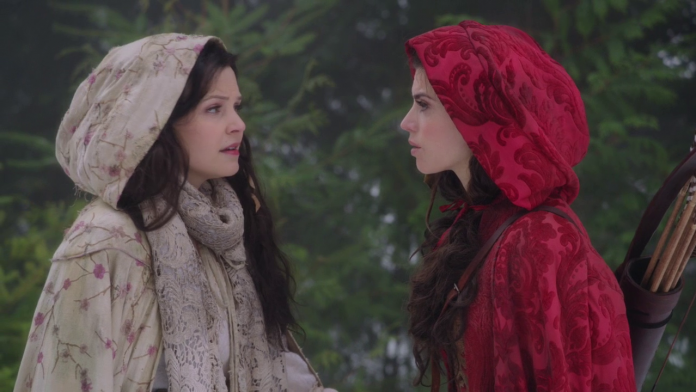Fairytale characters coming to life in this series depict the duality of human nature
By LORENA ALVAREZ — arts@theaggie.org
In a world where fairy tales with happy endings are the dominant presence in television as children, the Grimm Brothers tales are a stark contrast to Disney’s well-known stories. Like the former’s dark and violent tales, where Snow White’s happy ending entails the Evil Queen wearing red-hot shoes and dancing until she dies at their wedding, “Once Upon a Time” explores the complexity of happy endings and who is deserving of them.
For those who are unfamiliar, Edward Kitsis and Adam Horowitz’s “Once Upon a Time” follows Emma Swan and her son, Henry Mills, as they reunite in a world where magic does not exist. The plot alternates between Snow White’s fairy tale and a world where the fairytale legends are forced to forget their identities and live an ordinary life away from their partners: the Evil Queen’s happy ending.
In this harsh reality, the Evil Queen must share her adoptive son — the only person she has — and co-parent with Emma Swan. Henry undertakes the responsibility of making everyone recall their identities in order to realize that Regina is the true villain in their story. In their difficulty to co-parent and do what is best for Henry, Regina and Swan develop a complicated relationship with one another and uncover both sides of Snow White’s story.
This plot blurs the line between hero and villain through two main storylines: the Evil Queen’s backstory and Little Red Riding Hood’s. In depicting these seemingly contrasting characters’ fairy tales, the series reminds viewers that things may not always be as we perceive them as viewers and the protagonists in our own stories.
One of the first instances where viewers’ and Swan’s perception of Regina — the Evil Queen in the alternate universe — is complicated occurs in episode 18 of season one. The episode alternates between Swan’s search to prove that her mother, Snow White, is innocent and the Evil Queen’s backstory. Once a young woman forced to marry a King for status and wealth, Regina’s backstory reveals her grief and anguish; her mother kills Regina’s love, Daniel, after a younger Snow White informs Regina’s mother of the affair. In revealing the source of the Evil Queen’s hatred, the plot highlights innocence, complexity and the harsh reality that villainy is often in the eye of the beholder.
As if contemplating if Regina’s backstory would get this message across, the series dedicates season one, episode 15 to Little Red Riding Hood’s tale to highlight how even the seemingly innocent and naive can be the perpetrator.
While the plot illustrates Little Red’s fight for agency and freedom in an oppressive world, her fairy tale follows the deaths of innocent people at the hands of her lack of awareness. Many lives are lost when Little Red transforms into a werewolf and attacks the town, unable to take steps toward protecting her family and friends. In revealing that she has been the wolf all along and has been shielded from her own viciousness, and thus made unaware of the danger and pain she is capable of, the storyline challenges the inability to be both victim and villain.
As her lover dies at her own hand, the episode contemplates the grief one causes themself and the threat they cause to others in refusal to acknowledge the blurred line between innocent and perpetrator. In doing this, the episode encourages viewers to question and become aware of who we depict as villains and whose story goes unheard.
“Once Upon a Time” is a modernized version of the fairy tales many viewers today grew up watching. In blurring the line between hero and villain, the series speaks to the importance of hearing all sides of a story and contemplating the roles we play in the stories of others. While it is a drama, the series explores the seriousness of being biased and close-minded. The title itself, “Once Upon a Time,” suggests that the same person can be both a villain and a hero depending on whether we see one’s behavior at a given time.
Written by: Lorena Alvarez — arts@theaggie.org




